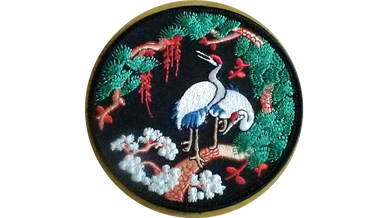The Woodlands Tai Chi and Kung Fu choice for 25 years.
What is Tai Chi?
What is Qigong?
What is Tai Chi?

Tai chi is sometimes described as meditation in movements. The slow control movements in Tai chi lengthens the muscles in the body, especially those shortened, tensed muscles that can cause pain and are prone to injuries. Tai Chi uses the small muscle groups in the body, encouraging not to drive movements with large muscle groups.
Tai chi improves balance by increasing strength in the legs and teaches the body to engage the trunk area and stand in alignment,
This ancient practice of martial arts when practiced regularly will improve mobility, flexibility, strength and general well being.
Tai chi practice is often used to relax the body and the mind. Tai chi practice sustains mental well-being as well as the physiological well being of the human body.
by Wendy Chang of Wendy Chang Tai Chi. Used with permission of Wendy Chang.
Defining Qi?
What is Qigong?
What is Tai Chi?

The concept of Qi or Chi is over 4,000 years old. Qi is a common concept and is found in martial arts, yoga, meditation and traditional medicine.
Qi is the animating power that flows throughout the body’s energy pathways, to help maintain essential health. The body is unwell when the flow of Qi becomes stagnant or blocked.
Qi is considered to be the life force of the body. Everyone is born with a limited amount. During the course of life, the body consumes the birth qi. As the qi level decreases, the body becomes sick.
There are over 7,000 recorded exercises designed to increase qi energy and qi flow throughout the body. These exercises became qigong or chi kung.
What is Qigong?
What is Qigong?
What is Qigong?

Qigong literally means “life energy work”. It is a healing art, a way of cultivating physical, spiritual, emotional and psychical health, that originated in China about seven thousand years ago.
Qigong can be described as a mind-body-spirit practice that improves one's mental and physical health by integrating posture, movement, breathing technique, self-massage, sound, and focused intent. There are thousands of qigong styles, each with different theories about Qi
Qigong movements are practiced individually: each is repeated before progressing to the next. By repetition, Qi is generated to replenish the lost Qi.
The movements in Qigong are not as intricate as those in Tai Chi. Qigong movements are free form and can be merged with an individual’s moving manner. The same move may look slightly different depending on the person and it provides the same healing benefits.
Tai Chi Level I
Exercise with Tai Chi
What is Qigong?
The student's journey begins with the Yang Style 8 Step Form. This form was designed for seniors with mobility issues. It is a good form to introduce students to the basic movements used in tai chi.
Once the form is completed, students may conitune the journey by learning the Beijing Short Form. This form contains the core movements of the tai chi long form without the repetitions. Once completed, students will understand basic movements of tai chi.
Tai Chi Level II
Exercise with Tai Chi
Exercise with Tai Chi
After completing Level I, the student is ready to explore the Yang Style 108 Posture Form or long form. The long form is taught in 3 sections and can be completed in 6 to 10 months. Students can receive the health benefits of tai chi without the long form. However, to maximize the benefits, it is necessary to learn the long form and have a basic understanding of tai chi theory.
Exercise with Tai Chi
Exercise with Tai Chi
Exercise with Tai Chi
Join Sifu Neighbors in Shibashi tai chi. These 18 exercises were designed so people can experience the health benefits of tai chi without memorizing a long sequence of movements. Shibashi is a great introduction to tai chi. It is also a good, safe exercise for people with chronic medical conditions or mobility issues that are not able to practice traditional tai chi. These exercises can be done standing up, sitting down and in a wheelchair.
This website uses cookies.
We use cookies to analyze website traffic and optimize your website experience. By accepting our use of cookies, your data will be aggregated with all other user data.
TCMA is celebrating 25 years in The Woodlands area. We are currently accepting students for the fall sessions. It is never to late to start traditional tai chi training.